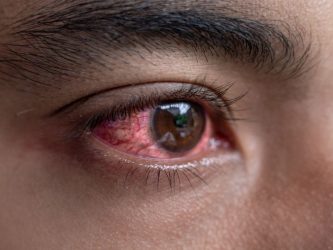Key Takeaways
- Panic attacks are sudden and intense, while anxiety is a persistent feeling of worry that can build gradually.
- Physical symptoms of panic attacks are severe and can mimic a heart attack, while anxiety symptoms are typically less intense.
- Both conditions are treatable, and seeking professional help is crucial for managing symptoms and improving quality of life.
1. Understanding the Difference: Panic Attacks vs. Anxiety
While the terms "panic attack" and "anxiety" are often used interchangeably, they represent distinct experiences. Understanding the difference is the first step toward getting the right help. Anxiety is a natural human emotion characterized by feelings of tension, worried thoughts, and physical changes like increased blood pressure.
It's a normal response to stress. However, when anxiety becomes excessive and persistent, it can develop into an anxiety disorder.
A panic attack, on the other hand, is a sudden, intense surge of fear or discomfort that peaks within minutes. It can occur unexpectedly or be triggered by a specific situation. While someone with an anxiety disorder can experience panic attacks, they are not the same thing. The primary difference lies in the intensity and duration of the symptoms.
| Feature | Panic Attack | Generalized Anxiety |
| Onset | Sudden and abrupt | Gradual and persistent |
| Duration | Peaks within minutes, typically lasts less than 30 minutes | Can last for weeks, months, or even years |
| Intensity | Severe and overwhelming | Varies from mild to severe |
| Trigger | Can be expected or unexpected | Often related to specific worries or stressors |
2. Recognizing the Symptoms: What to Look For
The physical and emotional symptoms of panic attacks and anxiety can overlap, but there are key distinctions. Recognizing these differences can help you better understand what you are experiencing and communicate your symptoms to a healthcare provider.
Symptoms of a Panic Attack
Panic attacks are characterized by a sudden onset of intense fear and a variety of physical symptoms. According to the Mayo Clinic, these can include:
- A sense of impending doom or danger
- Fear of loss of control or death
- Rapid, pounding heart rate
- Sweating, trembling, or shaking
- Shortness of breath or tightness in your throat
- Chills or hot flashes
- Nausea or abdominal cramping
- Chest pain
- Headache, dizziness, or faintness
- Numbness or tingling sensation
- Feeling of unreality or detachment
Symptoms of Generalized Anxiety
Generalized anxiety disorder (GAD) involves persistent and excessive worry about a number of different things. The Mayo Clinic notes that GAD symptoms include:
- Persistent worrying or anxiety about a number of areas that are out of proportion to the impact of the events
- Overthinking plans and solutions to all possible worst-case outcomes
- Perceiving situations and events as threatening, even when they aren't
- Difficulty handling uncertainty
- Indecisiveness and fear of making the wrong decision
- Inability to set aside or let go of a worry
- Inability to relax, feeling restless, and feeling keyed up or on edge
- Difficulty concentrating, or the feeling that your mind "goes blank"
3. The Role of Triggers: What Sets Them Off?
Triggers for panic attacks and anxiety can be both internal and external. For some, a specific situation, such as public speaking or being in a crowded space, can trigger a panic attack. For others, panic attacks can occur without any apparent trigger. These are known as unexpected panic attacks.
Anxiety, particularly in the case of GAD, is often triggered by a combination of factors, including genetics, brain chemistry, and life experiences. Stressful life events, such as a major illness, a death in the family, or financial worries, can also contribute to the development of an anxiety disorder.
4. Treatment Options: Finding What Works for You
Both panic attacks and anxiety disorders are highly treatable. Treatment plans are often tailored to the individual and may include a combination of therapy, medication, and lifestyle changes.
| Treatment Approach | Description |
| Psychotherapy | Cognitive behavioral therapy (CBT) is a highly effective form of therapy for both panic attacks and anxiety. It focuses on identifying, understanding, and changing thinking and behavior patterns. |
| Medication | Selective serotonin reuptake inhibitors (SSRIs) and serotonin-norepinephrine reuptake inhibitors (SNRIs) are commonly prescribed to help manage symptoms. In some cases, benzodiazepines may be used for short-term relief. |
| Lifestyle Changes | Regular exercise, a healthy diet, sufficient sleep, and stress management techniques like mindfulness and meditation can all play a significant role in managing symptoms. |
5. When to Seek Help: Partnering with Your Doctor
If you are experiencing symptoms of panic attacks or anxiety that are interfering with your daily life, it is important to seek professional help. Your primary care provider is an excellent first point of contact. They can help rule out any underlying medical conditions that may be causing your symptoms and refer you to a mental health professional.
At SOM Medical Practice, our team of compassionate healthcare providers is here to support you. We can help you understand your symptoms, develop a personalized treatment plan, and connect you with the resources you need to manage your mental health. Don't hesitate to reach out and schedule an appointment.
References
[1] Mayo Clinic. (2018, May 4). Panic attacks and panic disorder - Symptoms and causes.
[2] Mayo Clinic. (2021, October 13). Anxiety disorders - Symptoms and causes.








